Buying a Brace
A secondhand swing brace should last a lifetime if it has been well looked after. We recommend buying secondhand as there are lots available which are not worn down, they are also much less expensive than buying new. Stanley has proven to be good quality so look out for them when buying secondhand.
You can get different sizes, Paul recommends a 10 inch swing. This refers to the diameter that the handle swings round in, if the brace is described at 10 inches, the depth of the handle will be 5 inches, and the diameter it swings in will be 10.
If you are buying secondhand bits, check that the pointed snail (the smaller spiralled tip on the end which pulls the bit into the wood) and the spurs (the cutting edges either side of the bit) are sharp and protrude past the cutting edge so you get a clean cut, to see how to sharpen second hand bits click here. Machine bits made for electric drills can also work in a hand brace, however they do not lock in as well as the tang type, square taper traditional bit, however they will work. The main difference is that the machine type has a hexagonal shank designed for a three-jaw chuck. When searching for these use the terms ‘brace bits’ and ‘auger bits’.
Paul suggests spending no more than £50 on a new brace and between £5-10 on a secondhand one.
We purchased this for £13.95 from eBay with £3.50 delivery.
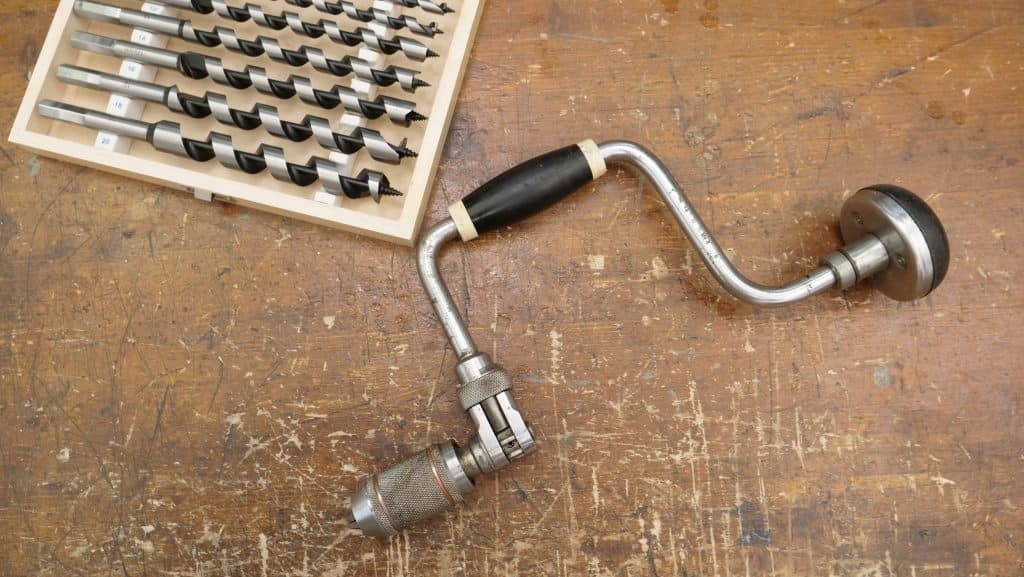
Relevant Guides
-
Setting up and Sharpening a Swing Brace and Bit
If you have purchased your brace secondhand, ensure all the parts move freely without friction, if not you can oil these parts to ease up the friction. There is usually an oil hole where the neck connects to the pad, only one or two drops are needed. The chuck and the chuck thread may also…
-
Using a Swing Brace
To use a brace, rotate the centre grip and combine hand and arm pressure to push the bit into the wood. The bit has a spiral point that assists to pull the bit into the wood with each rotation you make. The bit is held firmly within the chuck by two jaws. Turning the grip…
Further Reading
To read more on this tool, we recommend the following from Paul’s blog:

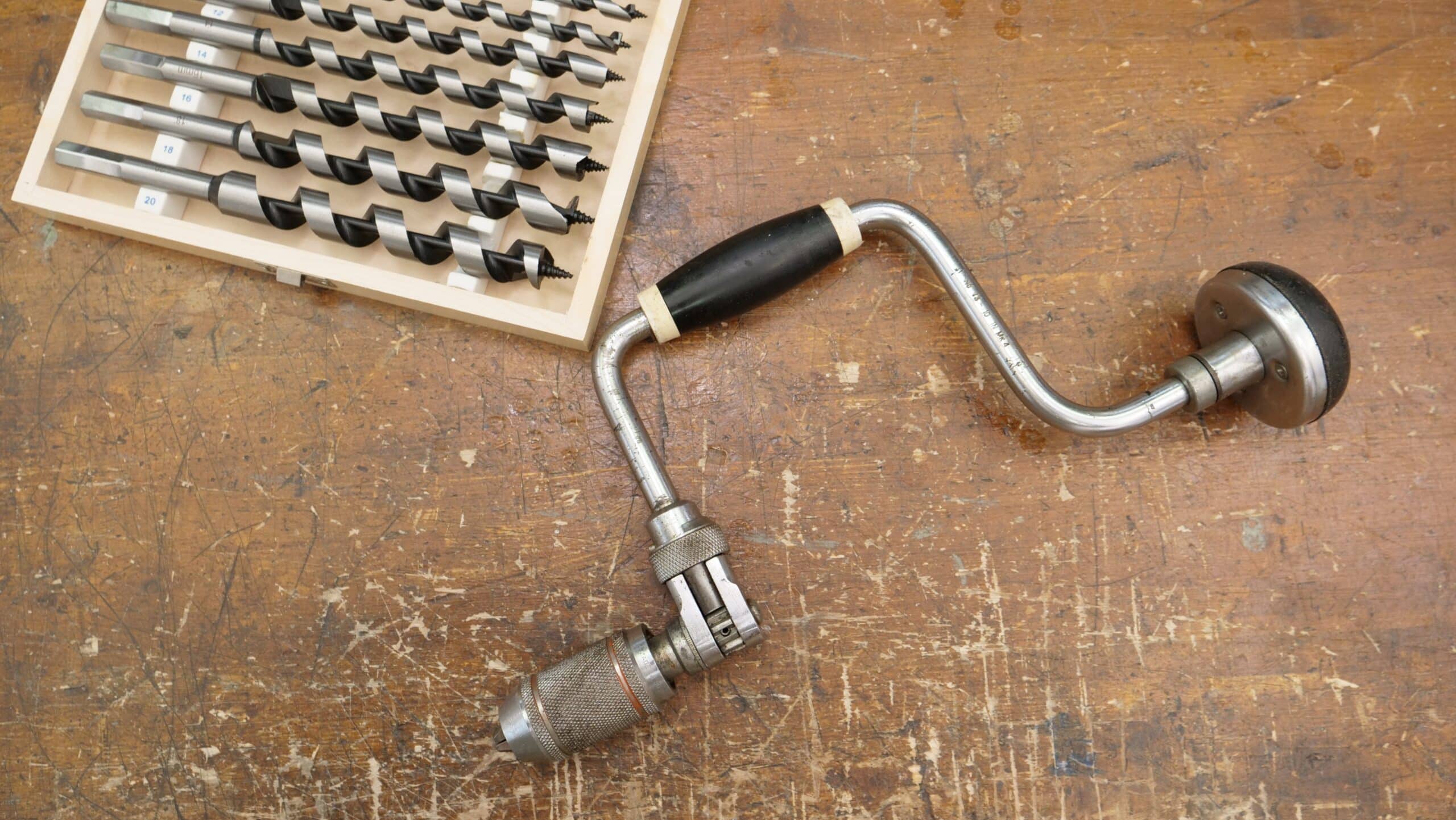
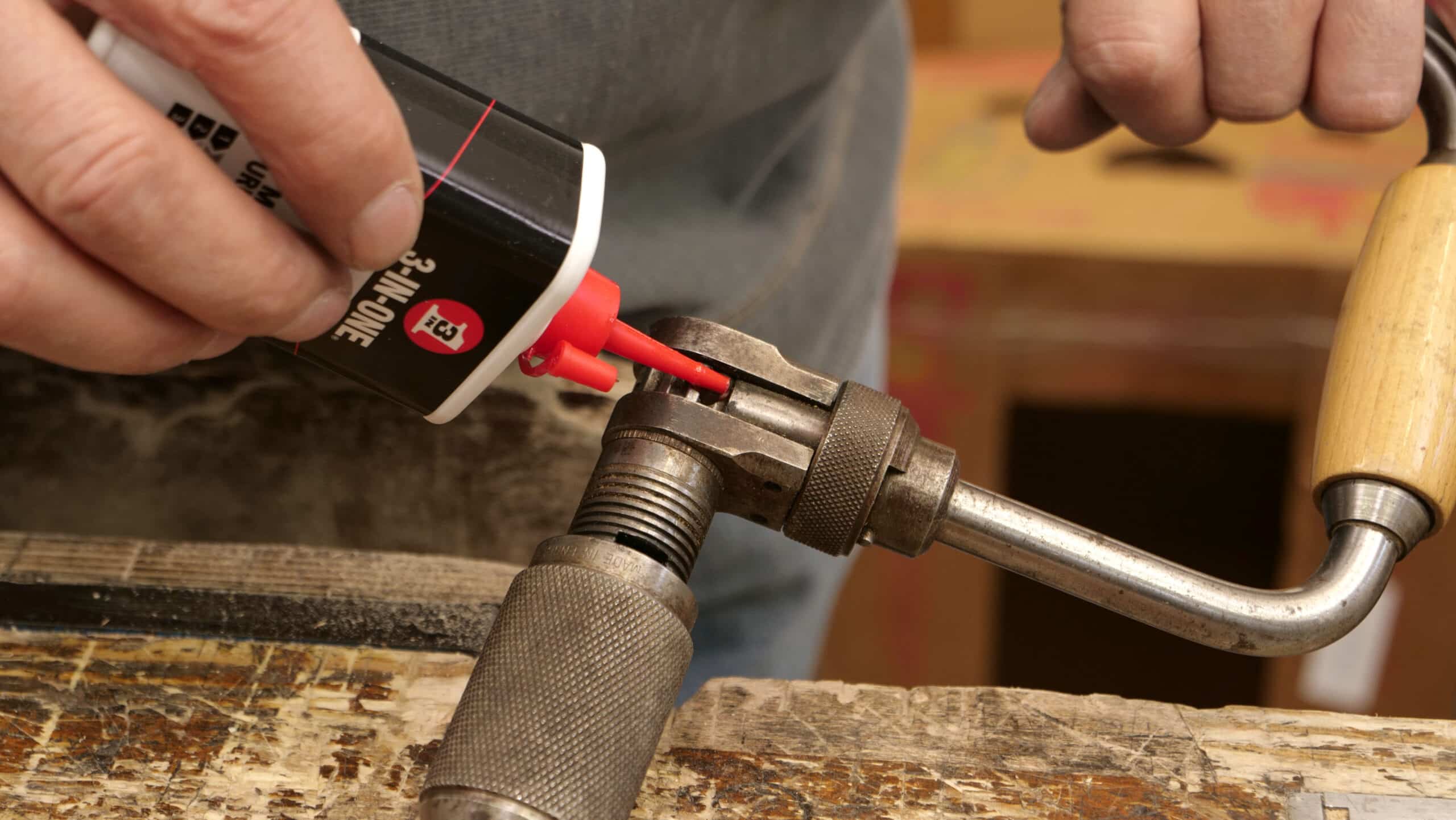
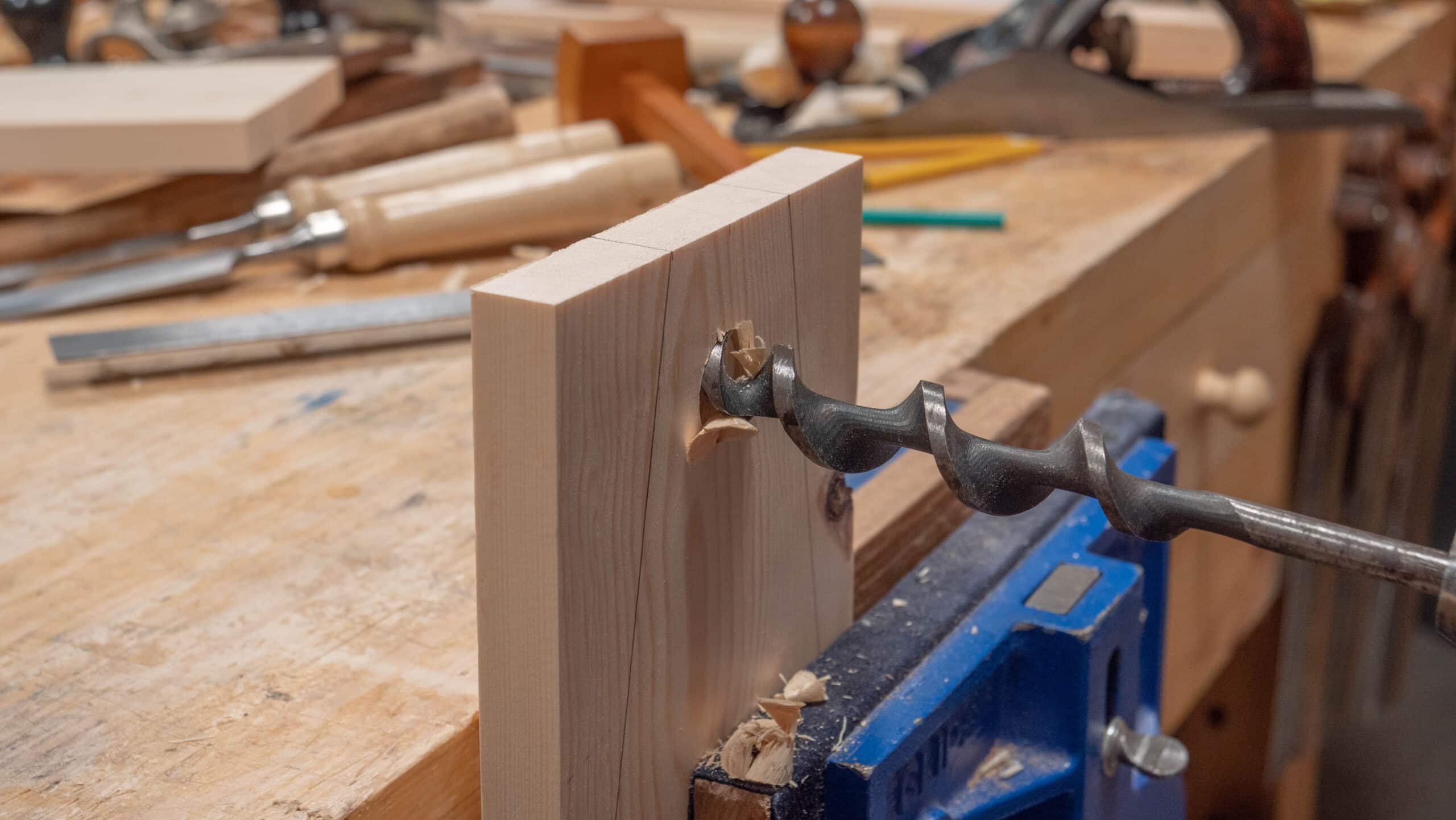
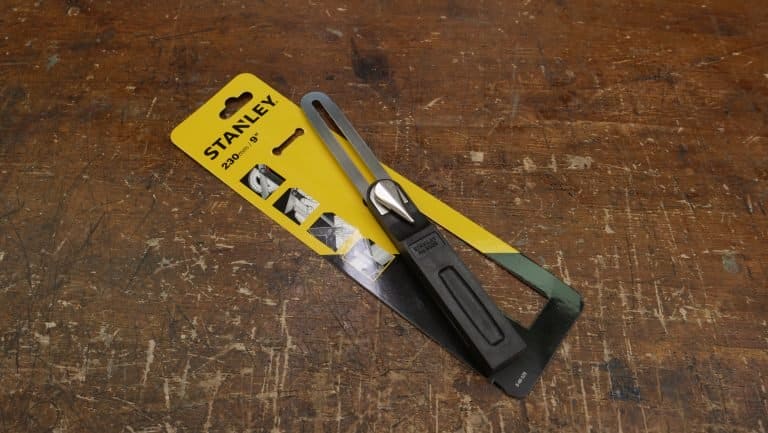
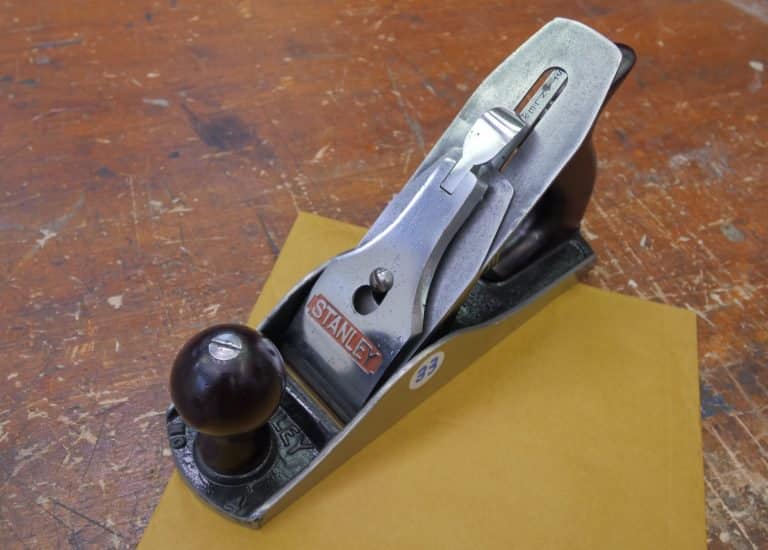
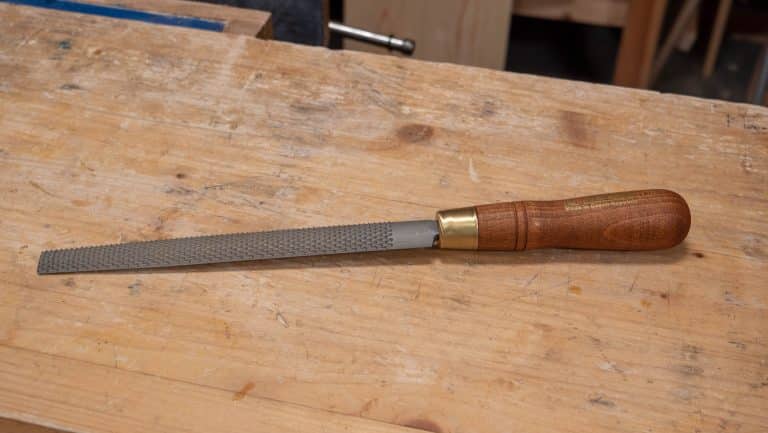
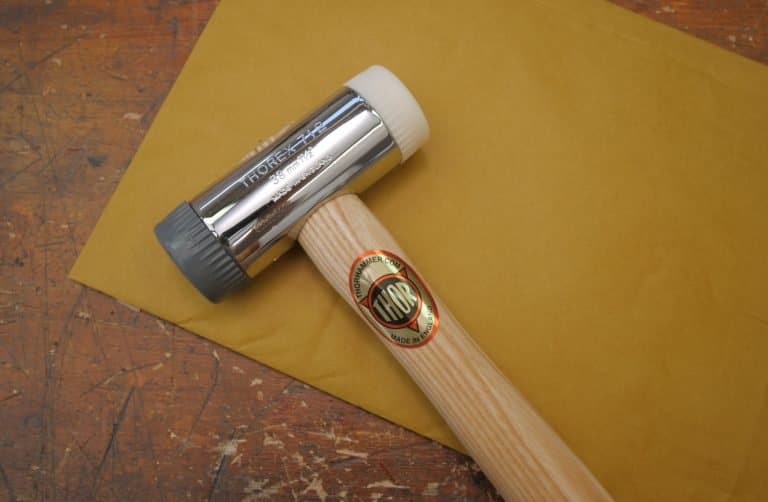
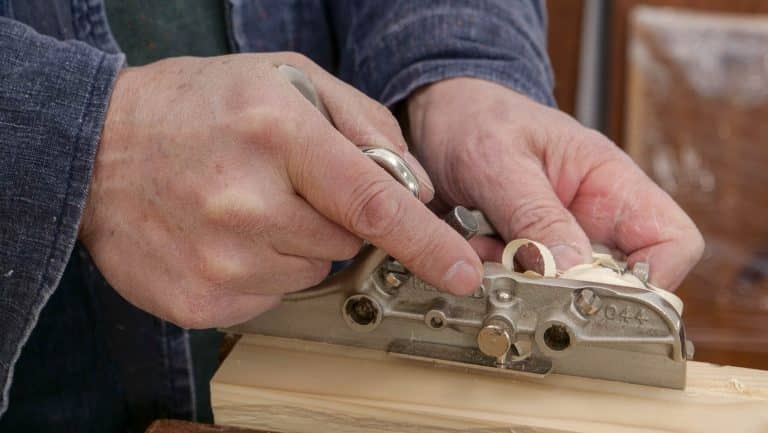
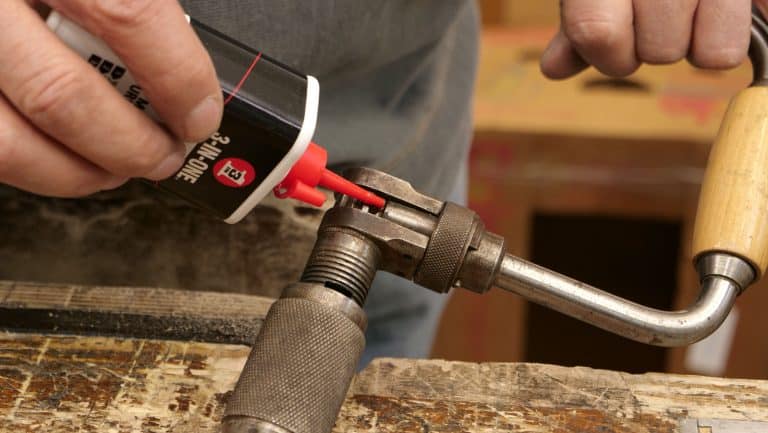
Hi!
I commend you for making this information readily available in a condensed format (compared to reading through Paul’s blog and the forums on WWMC) including some links to suitable, affordable options when buying new and prices you paid when buying second hand.
In this particular guide I would recommend (or rather wish for) an added paragraph regarding augers/brace bits and where to get them new. I have a brace, found in my late grandfathers shed, but the augers were in poor state and some sizes were missing. I have tried to find a set on eBay to a reasonable price but have failed and have seen some offerings of new ones but I’m not certain of quality and suitability for braces as the new ones mostly have hexagonal shanks.
Best regards,, Jim
Hi Jim,
Thank you for your comment.
I am pleased to hear you are enjoying the site!
I have taken onboard your suggestion and we will be adding more details on brace bits soon.
Kind Regards,
Izzy
Hi Jim,
I’ve been out shopping for some good antique/vintage hand tools–inspired by Paul’s work–and I’ve had very good luck at antique shops. Of course there’s a small price to pay for buying from the antiquer who took the time to visit estate sales to find the items; nevertheless, I’ve found good deals. I found a complete brace bit set in a scroll-style roll-up pouch for about $25USD–it contained everything from 3/16″ up to 7/8″–in mediocre condition.
Good luck!
-Steve
What brand are the boxed set of bits in the picture?
Hi Christopher,
These are a new set of bits made in China which are unbranded and are readily available online. As an alternative, Paul suggests you might try looking for second hand bits, you can see how to sharpen and repair these in our Setting Up and Sharpening a Swing Brace and Bit guide.
Kind Regards,
Izzy
Dear Team,
My brace is an old Stanley 965-10 . However it does not have a spring in the auger chuck and I was wondering if it was missing or this brace didn’t have one? It seems to work fine so I was wondering if there was any advantage to the spring? Perhaps this was a lower priced one not for the professional?
Many Thanks,
stephen
Hi Stephen,
Paul says:
If it has handyman written on it then it doesn’t have a spring, you just turn it with the chuck uppermost and drop the bit in.
Kind Regards,
Izzy
Hi there,
does it matter how many jaws the drill chuck has? My favorite tool store sells braces with two, three or even four jaws and they become more expensive the more jaws they have.
Kind regards
David
Hi David,
Paul says:
The one with the split chuck crocodile jaws works best on a swing brace.
Kind Regards,
Izzy
Hello I’m looking for a brace and came up with a Stanley H1253 in a very decent using condition. The seller said that the handle does not spin and I’m wondering if this particullary model just haver a rust problem or if it’s just not supposed to spin at all. Can you help me with this question? Thank um advance
Hi,
Paul says:
I don’t know because I don’t really know the different types of Stanley braces that well.
Kind Regards,
Izzy
Hi João,
Paul says:
I don’t know because I don’t really know the different types of Stanley braces that well.
Kind Regards,
Izzy
Hi Izzy. Hope you’re safe and well. I picked up a very nice brace for around $6 U.S. Now I face the somewhat daunting (to me) task of getting a nice set of bits for it. I am constantly browsing flea malls and thrift stores but haven’t found any yet. If Paul were to recommend buying new, does he have any particular brand/set he might suggest I get?
Thanks and have a wonderful day!
Joey Goodwin. (across the pond 😉 )
Hi Joey,
Paul says:
I’ve never bought them new, but have bought some almost new sets on eBay that come up frequently.
Kind Regards,
Izzy
These notes are ever so helpful. Please, can auger bits, which aren’t the usual for the swing brace, be sharpened by hand? Thank you.
Paul shows how to sharped auger bits here: https://woodworkingmasterclasses.com/videos/sharpening-auger-bit/
In the US (Midwest), Menard’s sells a 3 jaw chuck with a small 1/4″ hex shaft that works great in old braces. It costs $14.99 in 2022 (Performax® 3/8″ Keyless Chuck Adapter). I have no problems using the small 1/4″ hex shank bits in braces, they stay tight and straight (it’s the size that’s also used for small cordless drill Philips bits). However, all the bigger auger bits I have come across, new and old, have bigger 5/16″ hex or round shanks and I find it impossible to use them in a hand brace. They can’t go all the way in, don’t stay tight, and I never get them to stay straight. I have not had much luck finding old ones with the square taper shank in usable condition. This chuck allows me to use any hex or round shank bit with a diameter of 1/32 – 3/8 (1-10mm). It also does not add too much length to the setup.
Menard’s also sells auger bits that fit in the chuck, albeit a little expensive. They are “Irwins” made in Brazil and are not super well machined but they work and bore clean holes fast. The Menard’s website says they have a 7/16″ shank, which is false. They have a 5/16″ shank and fit and work perfectly well with the adaptor.
Thank you for the helpful article on buying a brace and bit.
What bits would make up a good starting collection? I don’t want to buy a collection of auger bits not to find them useful. If Paul could suggest what sizes to look out for first that would be very helpful.